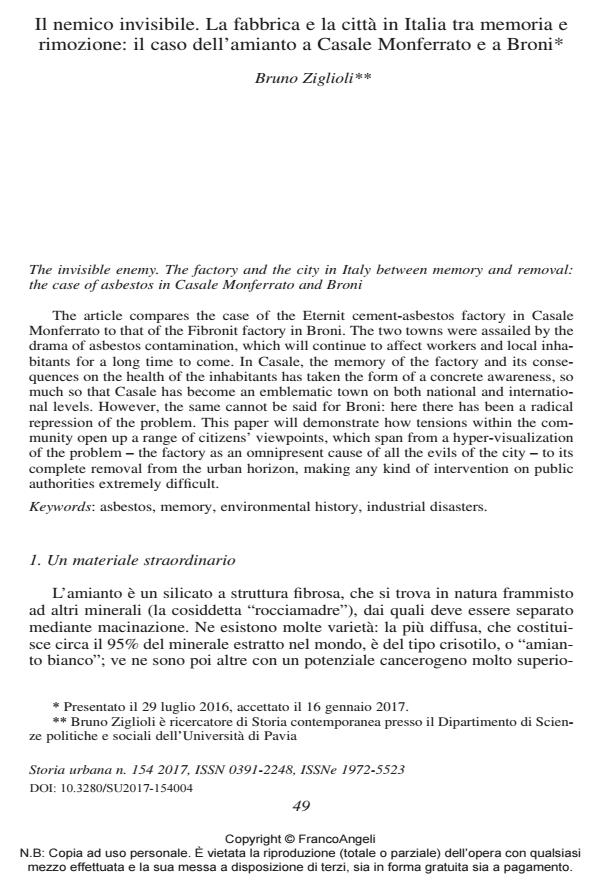Il nemico invisibile. La fabbrica e la città in Italia tra memoria e rimozione: il caso dell’amianto a Casale Monferrato e a Broni
Titolo Rivista STORIA URBANA
Autori/Curatori Bruno Ziglioli
Anno di pubblicazione 2017 Fascicolo 2017/154
Lingua Italiano Numero pagine 26 P. 49-74 Dimensione file 251 KB
DOI 10.3280/SU2017-154004
Il DOI è il codice a barre della proprietà intellettuale: per saperne di più
clicca qui
Qui sotto puoi vedere in anteprima la prima pagina di questo articolo.
Se questo articolo ti interessa, lo puoi acquistare (e scaricare in formato pdf) seguendo le facili indicazioni per acquistare il download credit. Acquista Download Credits per scaricare questo Articolo in formato PDF

FrancoAngeli è membro della Publishers International Linking Association, Inc (PILA)associazione indipendente e non profit per facilitare (attraverso i servizi tecnologici implementati da CrossRef.org) l’accesso degli studiosi ai contenuti digitali nelle pubblicazioni professionali e scientifiche
The article compares the case of the Eternit cement-asbestos factory in Casale Monferrato to that of the Fibronit factory in Broni. The two towns were assailed by the drama of asbestos contamination, which will continue to affect workers and local inhabitants for a long time to come. In Casale, the memory of the factory and its consequences on the health of the inhabitants has taken the form of a concrete awareness, so much so that Casale has become an emblematic town on both national and international levels. However, the same cannot be said for Broni: here there has been a radical repression of the problem. This paper will demonstrate how tensions within the community open up a range of citizens’ viewpoints, which span from a hyper-visualization of the problem - the factory as an omnipresent cause of all the evils of the city - to its complete removal from the urban horizon, making any kind of intervention on public authorities extremely difficult.
Parole chiave:Asbestos, memory, environmental history, industrial disasters.
- La difficile memoria dei disastri industriali in Italia Bruno Ziglioli, in STORIA E PROBLEMI CONTEMPORANEI 90/2023 pp.13
DOI: 10.3280/SPC2022-090002
Bruno Ziglioli, Il nemico invisibile. La fabbrica e la città in Italia tra memoria e rimozione: il caso dell’amianto a Casale Monferrato e a Broni in "STORIA URBANA " 154/2017, pp 49-74, DOI: 10.3280/SU2017-154004